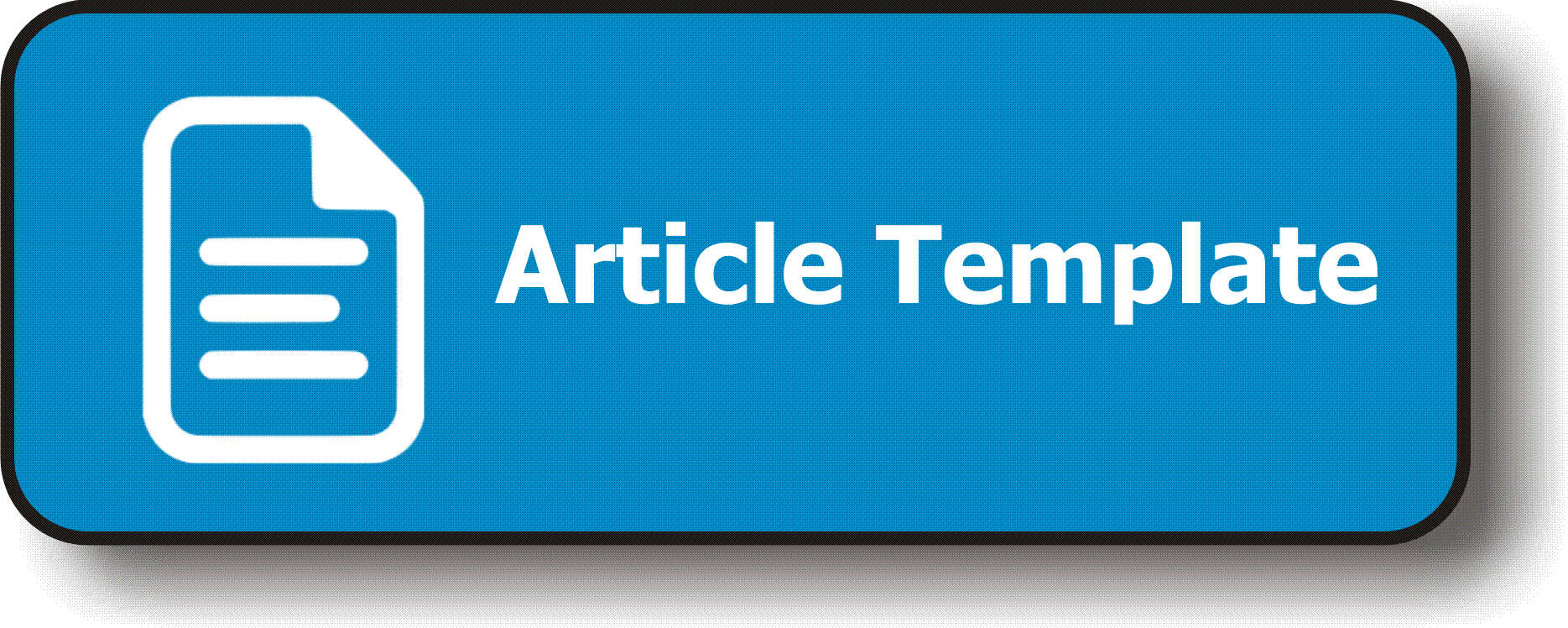Survey on The Need of Labelling Tools Kit
Abstract
Keywords
Full Text:
PDFReferences
AG, R. A., Zulfitria, Z., & Dewi, H. I. (2020). Pengolahan Bahan Pustaka Perpustakaan Tingkat Sekolah Dasar Desa Iwul, Parung. NATURALISTIC: Jurnal Kajian Penelitian Pendidikan Dan Pembelajaran, 4(2), 553–561.
American Association of School Librarians. (2021). Position Statement on Labeling Practices. https://www.ala.org/news/member-news/2021/03/aasl-releases-position-statement-labeling-practices
Asnawi, A. (2015). Perpustakaan Desa Sebagai Sumber Layanan Informasi Utama. Media Pustakawan, 22(3), 34–40.
Busayo, I. O. (2014). Shelving , shelf reading and the challenges of shelving staff in academic libraries in Ekiti State , Nigeria. International Journal of Library and Information Science, 6(6), 116–121. https://doi.org/10.5897/IJLIS2014.0458
Daryono. (2016). Penggunaan Label Warna pada Sistem Penjajaran Koleksi Buku di Perpustakaan Universitas Bengkulu. Almaktabah, 1(1), 85–96. http://repository.unib.ac.id/14542/
Connaway, L. S., & Radford, M. L. (2017). Research Methods in Library and Information Science. In Syria Studies (6th ed.). ABC-CLIO.
Ernawati. (2018). Perpustakaan Digital Dalam Temu Kembali Informasi Dengan Opac. (Jurnal Ilmu Perpustakaan Dan Informasi, 3(1), 103–120.
Fadhli, R., Bustari, M., Suharyadi, A., & Firdaus, F. M. (2021). Manajemen perpustakaan sekolah: Teori dan praktik. Pena Persada.
Fathmi & Ardiarti. (2011). Katalogisasi: Bahan ajar diklat pustakawan tingkat ahli. Perpustakaan Nasional.
Frankfort-Nachmias, C., & Nachimias, D. (2008). Chava F (7th ed.). Worth Publishers.
Goldhor, H. (1972). Introduction to Scientific Research in Librarianship. Univ of Illinois Grad Sch of Lib Sciences.
Gunawan, A. (2019). Fungsi Label Punggung Buku Dalam Penjajaran Koleksi (Shelving) Di Perpustakaan Pusat Riset Perikanan. Jurnal Pari, 4(1), 33. https://doi.org/10.15578/jp.v4i1.7828
Harney, R. F. (2021). Books End-Processing: Labels. Houghton Technical Services. https://wiki.harvard.edu/confluence/display/HoughtonTechnicalServices/Books+End-Processing%3A+Labels#BooksEndProcessing:Labels-Spinelabels
Harney, R. F. (2022). Books End-Processing: Workflow. Houghton Technical Services. https://wiki.harvard.edu/confluence/display/HoughtonTechnicalServices/Books+End-Processing%3A+Workflow
Hasbana, A. (2017). Standar kompetensi pustakawan sebagai instrumen asesmen jabatan fungsional pustakawan. Al-Maktabah, 16(1).
Husni, L., Rusmono, D., & Margana, H. H. (2016). Hubungan Antara Shelving Dengan Proses Temu Balik Informasi Pada Perpustakaan Universitas Pendidikan Indonesia. Jurnal Edulibinfo, 3(1), 38–50. https://docplayer.info/70433141-Hubungan-antara-shelving-dengan-proses-temu-balik-informasi-pada-perpustakaan-universitas-pendidikan-indonesia.html
Irawan, A., & Najiullah, A. (2015). Sistem Informasi Perpustakaan Pada Universitas Serang Raya Berbasis Web. ProTekInfo (Pengembangan Riset Dan Observasi Teknik Informatika), 2, 34–39.
Manangkalangi, L. C., Golung, A. M., & Himpong, M. D. (2019). Peran Latar Belakang Pendidikan Tenaga Perpustakaan Dalam Pengolahan Bahan Pustaka Di Perpustakaan Universitas Hein Namotemo. Acta Diurna Komunikasi, 1(3).
Mandala, Rila, & Hendra, S. (2022). Peningkatan performansi sistem temu kembali informasi dengan perluasan query secara otomatis. Proceeding the 3rd Annual Meeting of the Indonesian Digital Librray Networks. Establishing Cooperation to a Networked Information Society.
Mulyani, S. (2019). Bahan Ajar Pendidikan dan Pelatihan Kepala Perpustakaan Sekolah. Organisasi Informasi, 5–24.
Mustika, P. (2017). Profesionalisme pustakawan. Buletin Perpustakaan, 27–36.
Olalekan, S.O., Mutiat, Y.S., Oluwaseyifunmi, Y. A. (2021). Information Retrieval System as a way of Accessing Information Resources in the Libraries : An Overview. 9(September), 356–363.
Pendit, P. L. (2007). Perpustakaan Digital: Sebuah Impian dan Kerja Bersama. Sagung Seto.
Philipps, E. (1999). Documentation Made Easy. Friedrich Vieweg & Sohn. http://www.nzdl.org/cgi-bin/library?e=d-00000-00---off-0cdl--00-0----0-10-0---0---0direct-10---4-------0-1l--11-en-50---20-about---00-0-1-00-0--4----0-0-11-10-0utfZz-8-10&cl=CL2.4&d=HASH0102ba5b67f370e296e89b4b.15.4>=1
Prabowo, W. & Krismayani, I. (2019). Efektifitas Penggunaan Label Nomor Panggil Khusus Dalam Proses Temu Kembali Informasi Pemustaka di UPT Perpustakaan Universitas Dian Nuswantoro Semarang. Jurnal Ilmu Perpustakaan, 8(1), 114–123. https://ejournal3.undip.ac.id/index.php/jip/article/view/26775
Pickard, A. J. (2013). Research Methods in Information (2nd ed., Issue 3). Facet Publishing.
Pratiwi, P., & Sahidi, S. (2021). Pengolahan Bahan Pustaka Di Perpustakaan Fakultas Ilmu Sosial Dan Ilmu Politik (FISIP) Universitas Tanjungpura. Jurnal Pendidikan Dan Pembelajaran Khatulistiwa, 10(11).
Rahmawati, E. (2021). Pengolahan bahan perpustakaan di UPT Perpustakaan IAIN Kediri. IJAL (Indonesian Journal of Academic Librarianship), 5(1), 1–8.
Salton, G., Fox, E. A., & Wu, H. (1983). Extended boolean information retrieval. Communications of the ACM, 26(11), 1022–1036.
Sugiyono. (2016). METODE PENELITIAN KUANTITATIF, KUALITATIF DAN R & D. Alfabeta.
Sulistyo-Basuki. (1991). Pengantar ilmu perpustakaan. Gramedia Pustaka Utama.
Sutarno. (2006). Perpustakaan dan Masyarakat. Sagung Seto.
Spidal, D. F. (2011). Physical processing of monographs by library technical services. Library Collections, Acquisitions, & Technical Services, 35(1), 1–9. https://doi.org/10.1080/14649055.2011.10766286
Tague‐Sutcliffe, J. M. (1996). Some perspectives on the evaluation of information retrieval systems. Journal of the American Society for Information Science, 47(1), 1–3.
Tomlin, N., & Kandarasheva, I. (2014). Ready or Not?: An Assessment of Shelf-Ready Materials Management Practices in US Academic Libraries. Library Resources & Technical Services, 58(3). https://journals.ala.org/index.php/lrts/article/view/5264/6399#tbl5
UND Library. (2022). Call Numbers and Spine Labels. https://libguides.und.edu/technical-services/cataloging
Van Rijsbergen, C. J. (1986). A new theoretical framework for information retrieval. In Acm Sigir Forum. ACM Press / Addison Wesley.
DOI: https://doi.org/10.17509/edulib.v13i1.52555
DOI (PDF): https://doi.org/10.17509/edulib.v13i1.52555.g24700
Refbacks
- There are currently no refbacks.
Copyright (c) 2023 Edulib

This work is licensed under a Creative Commons Attribution-NonCommercial-ShareAlike 4.0 International License.

This work is licensed under a Creative Commons Attribution-ShareAlike 4.0 International License.





